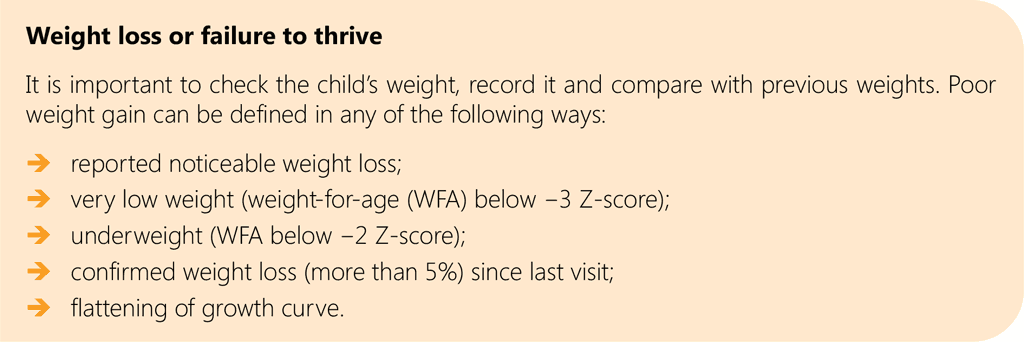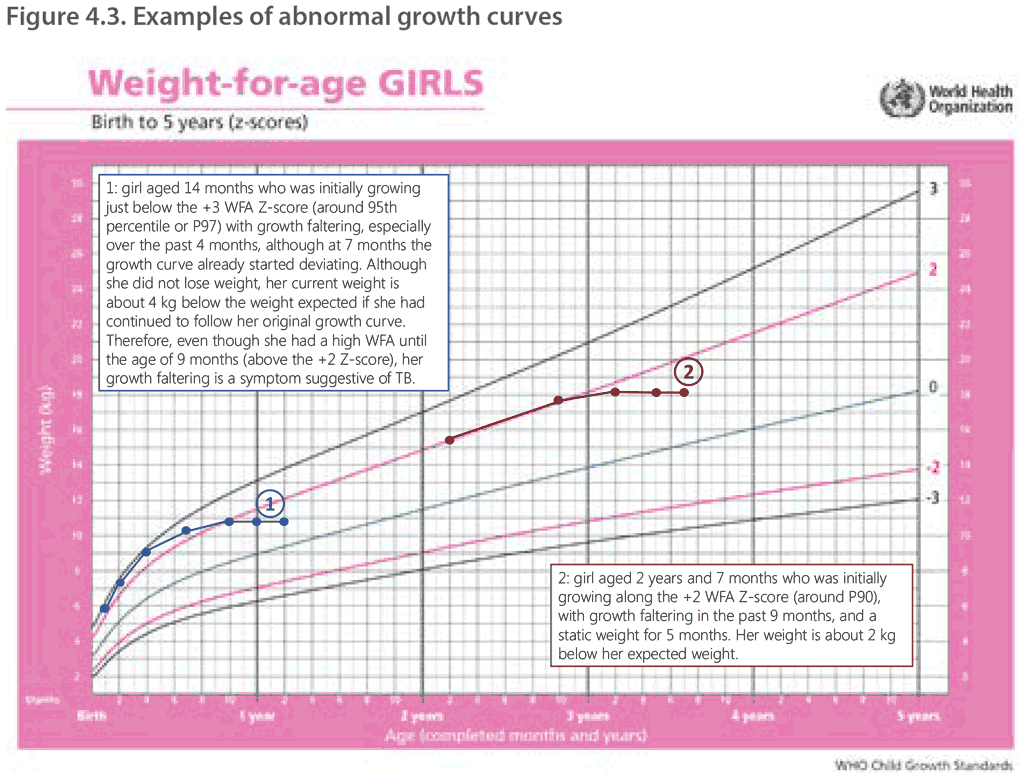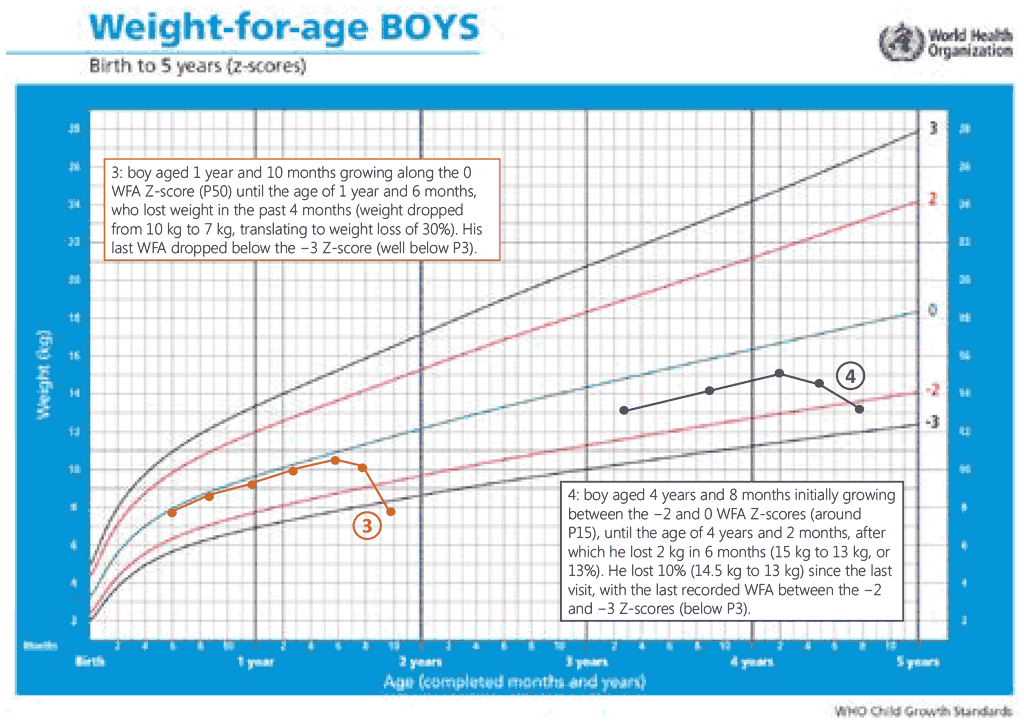Book traversal links for 4.3.3. Clinical examination
Although there are no findings on clinical examination that can confirm TB, some clinical signs are highly suggestive. In addition, a variety of nonspecific signs should raise clinical suspicion and prompt an evaluation for TB disease. The following clinical features can alert care providers that the child may have TB (6, 72):
- Poor weight gain – check and record weight and compare with previous weight in the past 3 months. Look for weight loss and check for growth faltering or failure to thrive (flattening of the curve). See Figure 4.3 for examples of abnormal growth curves suggestive of TB.
- Vital signs – check for elevated temperature (fever) and increased respiratory rate (see Box 4.8).
- Signs of respiratory distress:
- specific integrated management of childhood illness (IMCI) signs to monitor in children aged under 5 years are chest indrawing, stridor and oxygen saturation below 90%; these are usually not due to TB but are important to guide clinical management;
- auscultation and percussion are usually normal but may reveal lung disease (e.g. crackles, bronchial breathing, fixed area of wheezing due to airway narrowing from enlarged lymph nodes) or pleural effusion (dullness, reduced breath sounds).
- Other physical signs suggestive of PTB include:
- SAM, especially if not responding to therapeutic nutritional treatment;
- acute pneumonia not responding to adequate course of antibiotics;
- persistent wheeze not responding to bronchodilators (especially if fixed and non-symmetrical).
- Other physical signs suggestive of EPTB (see Table 4.6) include:
- non-tender enlarged cervical lymph node mass (especially if more than 2 × 2 cm) with or without fistula formation – TB lymphadenopathy;
- presence of narrow angle spinal kyphosis (angular swelling), especially if recent onset (“gibbus”) – spinal TB;
- signs of non-acute meningitis (onset over more than 5 days), especially if not responding to antibiotic treatment and/or with raised intracranial pressure – TBM;
- pleural effusion, especially one-sided dullness with pleuritic pain in a child who is not acutely ill – pleural TB;
- pericardial effusion, distant or muffled heart sounds or signs of new-onset heart failure – pericardial TB;
- non-acute distended abdomen with or without ascites – abdominal TB;
- non-tender swollen joints with painful or abnormal gait – osteoarticular TB.




The trajectory in the past 3 months is the most important feature. A child growing along the same centile line over many years is not a concern for TB disease, even if this is more than 2 standard deviations below “normal”.
Z-score −2: underweight for age; Z-score −3: very low WFA.
Source: Weight-for-age. Geneva: World Health Organization (https://www.who.int/tools/child-growth-standards/standards/weight-for-age).
 Feedback
Feedback